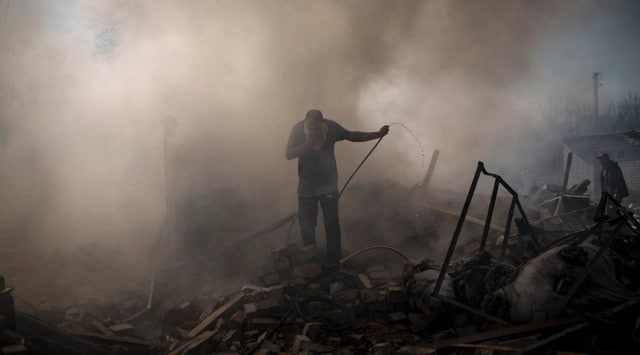The ongoing war has highlighted the importance of a balanced mix of rockets and guns in the Army’s artillery inventory, the acquisition of more precision-targeting weapon systems and niche technologies, as well as the critical need for robust battlefield transparency, according to top officials.
The war has also underscored the necessity for adequate measures to protect the forces from enemy counter-bombardment, leading to a requirement for more self-propelled guns, mounted guns systems, or towed guns with auxiliary power units and shoot-and-scoot capability.
These key lessons from the war are now being incorporated into Indian artillery doctrines and capability development plans.
The war has reaffirmed the importance of firepower as a decisive factor in battle, with 80 percent of casualties attributed to artillery fire. This has emphasized the need for a judicious mix of guns and rockets in the inventory.
Additionally, the war has emphasized the need for more precision and terminally guided munitions in the Army’s inventory, which were used in the war for precision-targeting.
Furthermore, the war has highlighted the importance of battlefield transparency in identifying, acquiring, and engaging targets in real time, reducing the time between acquisition and engagement, and the need for a more effective kill chain.
The war has also underscored the importance of inducting niche technology equipment such as loiter munitions, swarm drones, counter-drone systems, and other communication systems. Future wars will involve technologies such as artificial intelligence, machine learning, and data analytics for precise analysis and target engagement.
The war has also emphasized the need to be prepared for prolonged operations, requiring an indigenous arms industry capable of surging production of arms and armament when needed.
Lessons from the war have led the Army to create a revised Artillery profile, with different gun systems required for specific deployment areas.
The Regiment of Artillery’s capability development plans are progressing well, with the standard calibre of all artillery guns set to be 155mm in line with worldwide trends.
The Army has already signed contracts for different types of 155mm guns and is starting the procurement process for additional types of 155mm guns.
Induction of additional regiments of Pinaka rockets is likely to start soon, with plans to increase the range of the rockets. The missile capability is also being enhanced in terms of range and accuracy for both ballistic and cruise missiles.
The Army is engaged in the procurement of Excalibur and Precision Guidance Kit for precision targeting, and is also focusing on rocket munitions and trials for Area Denial Munitions. Additionally, the induction of niche technology equipment such as loiter munitions, swarm drones, and advanced radar systems is underway.














+ There are no comments
Add yours